|
| |
Garden Visitors
This page shows some of the creatures that I've seen in my garden.
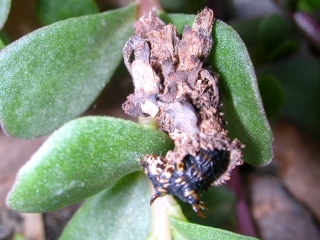 |
<=== The caterpillar in the next three photos was
very well camouflaged. Only about 1/4 of his body
protruded from his semi-cocoon. He traveled much like a hermit crab. If I
had not seen him (her?) moving, I would not have ever been able to
differentiate it from any of the other debris lying around. The entire thing
was maybe 1/2 inch long. |
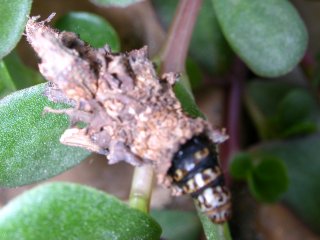 |
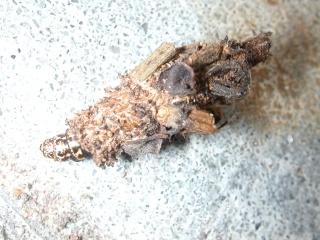 |
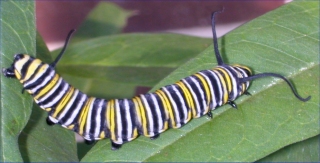 |
<=== I get several of these 2 - 3
inch long caterpillars each year.
They seem to dine exclusively on my butterfly weed. A friend of mine has
identified them as monarch butterfly larvae. |
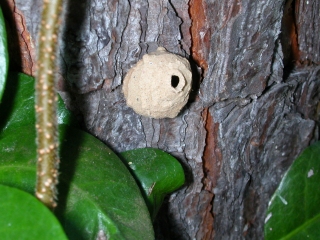 |
<=== I found the egg chamber of a potter
wasp (approximately 3/8" in diameter) on the trunk of
one of my pine trees. The potter wasp lays a single egg in the chamber then
paralyzes several caterpillars and and stocks the chamber with them as food
for developing larva. The chamber opening is sealed with a mud pellet,
making the pot rainproof until the emerging wasp cuts an exit hole from the
inside. The vine pictured is an Angel's Wing Jasmine. |
 |
<=== The paper wasp pictured here is
doing something interesting. If you look closely, you can see that the wasp
has torn some of the wood off of this old wood stake. The wasps shred off a
piece of wood and then chew it with their mandibles until it becomes a paper
that they can use as material for their nest. I never disturb or remove any
bee or wasp nests unless absolutely necessary. (For example, if they try to
build one under my favorite bench --- don't ask, but it did sort of smart to
sit down for several days.) However, almost all bees and most wasps are
plant pollinators. Besides, many wasps also hunt caterpillars, which helps
to save my plant's foliage. |
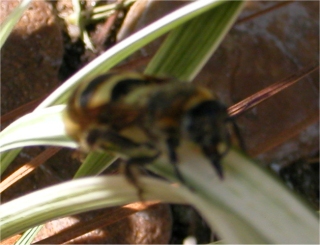 |
<=== I believe this to be an alkali bee.
It was difficult to capture with my camera. Here it sits on a blade of
variegated Lirope. Our backyard was nothing but sandy loam when we first
moved in and these bees nested here by the hundreds. Alas, our grass, flower
beds and brick pavers ruined almost all of their nesting grounds. I still
find that several will dig down into the crevices to make nests between the
pavers as this area is filled with sand.
Alkali bees are excellent pollinators and although the females are
equipped with a stinger, I have found them to be quite harmless. |
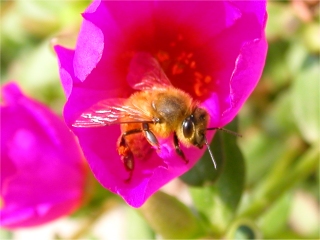 |
<=== I get plenty of these visitors, as
well I should, considering my hobby.
Actually, one would think that with anywhere from 60,000 to (at times)
250,000 honeybees in my backyard, they would be so thick that they would be
a pest. However, I only see a handful foraging in my yard. In the spring,
there are just too many other better and more plentiful plants for obtaining
nectar and pollen than I can provide at home. In the summer, when pickings
are slimmer, I do see more bees, but 99% of them still prefer to forage far
away.
The only plant that seems to attract them like a magnet is the Mexican
Heather. |
| |
|
| |
|
|
